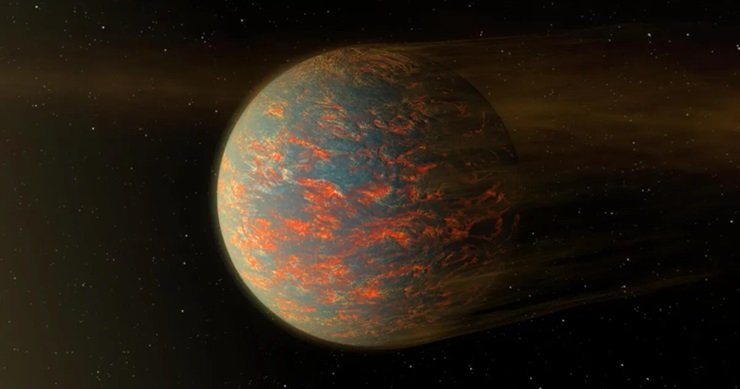The first super-Earth ever discovered, 55 Cancri e, has been emitting puzzling signals for nearly two decades. Scientists now believe these signals could be due to periodic volcanic activity on the planet.
These eruptions spew out hot gas that forms a temporary atmosphere, which then burns off due to extreme heat, leaving the planet bare again. This theory could explain the inconsistent transit signals, which vary in strength and sometimes disappear entirely.
The James Webb Space Telescope could potentially confirm this theory by measuring the pressure and temperature of the planet’s atmosphere to determine if it is always present. 55 Cancri e, a rocky planet eight times the size of Earth, is located around 40 light-years away and orbits its parent star in just 17 hours due to its close proximity.
Key Takeaways:
- The first super-Earth ever discovered, 55 Cancri e, has been emitting strange signals for nearly two decades due to its volatile atmosphere that forms and burns off periodically due to volcanic activities.
- The planet’s proximity to its parent star causes extreme conditions, including scorching temperatures, which leads to outgassing and the subsequent loss of the atmosphere due to the intense heat.
- Scientists plan to use the James Webb Space Telescope to further study and test the hypothesis about the planet’s unstable atmosphere and its impact on the transit signals observed from Earth.
“Volcanoes on this hellish world periodically open up and spew hot gas that forms an atmosphere, only for that atmosphere to burn off and leave the planet bald again, a new study suggests. Testing that theory will involve training the James Webb Space Telescope (JWST) on the strange exoplanet.”
More details: here


Leave a Reply